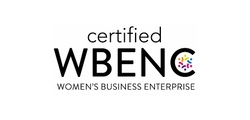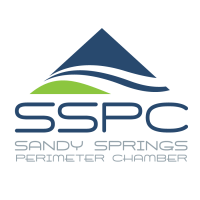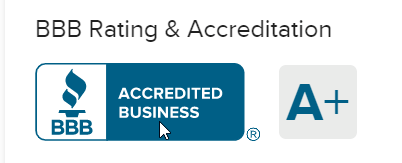In today’s competitive environment, the goal should be to develop and retain high performing and high potential associates who are empowered, enthusiastic and loyal. Obviously, this doesn’t just happen! And, it is not happening, based on the Aon Hewitt 2017 Trends in Global Employee Engagement study that shows that employee engagement is on the decrease.
We all agree that employee engagement is critical to business growth, especially when you consider alarming facts about the impact of disengagement on a company’s bottom line. Globally, disengagement costs companies hundreds of billions of dollars per year.
Employees with lower engagement are four times more likely to leave their jobs, and highly engaged employees are 87% less likely to leave their companies. Gallup research shows that direct replacement costs can reach as high as 50% to 60% of an employee’s annual salary, and total costs associated with turnover range from 90% to 200% of annual salary. This is a return on investment that is easy to model, but too often overlooked.
Consider this: You have a high performing, high potential associate who is well trained and understands your go-to-market strategies and products and services, as well as those of your clients. This individual has the potential, ability and aspiration for leadership and are valuable assets to your company. But if the associate does not like you or trust you and is not engaged with your business or brand, you risk the high costs of losing that person to your competition.
People work with people they like and trust!
If you still have the mindset that employees should automatically respect their leaders, you’re wrong. A leader is only as good as a team’s desire to be led. People work with people they like and trust. If we do not embrace this, we risk losing the trust and respect of our associates and outright losing our high-performing associates. People want to work with leaders who put service above self and create the trust and loyalty of those they lead.Try this exercise, which provides a solid visual for Servant Leadership. Take your organization chart and turn it upside down. Now this is a true picture of an organization that embraces Servant Leadership.
What does it take?
Creating trust takes a lot of work. If it were easy, we all would be doing it and our engagement scores would be increasing instead of decreasing. We must listen to our associates, we must help them grow and develop. We must ensure they maintain a life balance. Yes, work is important but associates, especially millennials, require a sense of belonging, they require their lives to have purpose. They desire to belong to a community where they can make a difference, a community that provides meaning. These are not just requests; they are requirements.
To help meet these requirements, it is critical to find the right tools to help measure associates’ current state of emotions and feelings, compared to the optimal. Why? Measurement provides a clear picture of the “disappointment gap,” which should be studied and acted upon quickly. This is the secret sauce to drive engagement and create a culture built on trust with purpose.
Reward and recognition are engagement drivers
In the Aon Hewitt study, Reward & Recognition leapt to the top spot of engagement drivers. To create an environment that drives recruitment, engagement and retention, a benefits package must be much more than just medical and compensation. With today’s multi-generational workforce, benefits should be flexible and include talent management strategies, training, enrichment opportunities, wellness, rewards and recognition and a supportive infrastructure that promotes growth and social community interaction.
A recent Gallup study revealed organizations with recognition programs improve employee engagement and have a 31% lower turnover rate than organizations with ineffective or no recognition programs. When employees are recognized for their efforts, they feel appreciated and become more engaged and more productive. It follows the theory of reinforcement in brain sciences – that people repeat the positive behaviors they are rewarded for.
The key is in recognizing the efforts of those moving our business forward and rewarding in a fashion that drives the desired performance. Achievements need to be recognized and applauded, whether it’s performance, tenure, wellness, safety or compliance. And, with generational differences in the workplace it is important to understand the biological, emotional, social and cognitive drivers of behavior in order to design reward and recognition programs that appeal to a variety of workforce preferences.
What steps can companies take to nurture their top employees?
Employee engagement doesn’t just happen. We must pay attention. We must create an environment where each associate has the will to win, the desire to succeed, the urge to reach their full potential and the realization that, whether individually or part of a team they make a difference.
So, if our goal is to develop and retain high performers who are empowered, enthusiastic and loyal – the question is: How does it happen?
- It starts with leadership strategically aligning our business goals with our people goals to build an empowered workforce that actively collaborates toward organizational success.
- We need to listen and understand the requirements of our associates. Not through surveys, but through well defined tools that streamline top-down and bottom-up communication in a clear and concise fashion
- Most of all, we must embrace servant leadership, where we take into account the needs of the people we lead. This promotes an environment of trust and empowerment where all associates are working toward the good of the whole because it is in the best interest of all.
Understanding and analyzing the emotional drivers of our associates and aligning their requirements and needs with our business drivers and core values will help us focus on the GOAL – to develop and retain high performers who are empowered, enthusiastic and highly engaged – resulting in satisfied and loyal customers and higher returns.
Tina Gunn Weede, CRP, is President & CEO of Peerless Performance Group and a SITE Foundation Trustee.
About Peerless Performance Group
Peerless Performance Group helps companies design strategies and solutions to Build Trust with Purpose by determining the needs of an organization through research and analysis and providing the tools necessary for companies to create an environment of positive engagement, and a culture where each associate has a will to win, the desire to succeed and the urge to reach their full potential. As a full-service agency, Peerless Performance services include: Peerless Research and Analysis, Culture Engineering, Engagement and Communication Platforms, Incentive Travel, White Glove Concierge Travel, Meetings and Events, Awards, Recognition and Wellness Programs and Creative Communication Strategies and Campaigns.
By Tina Gunn Weede









